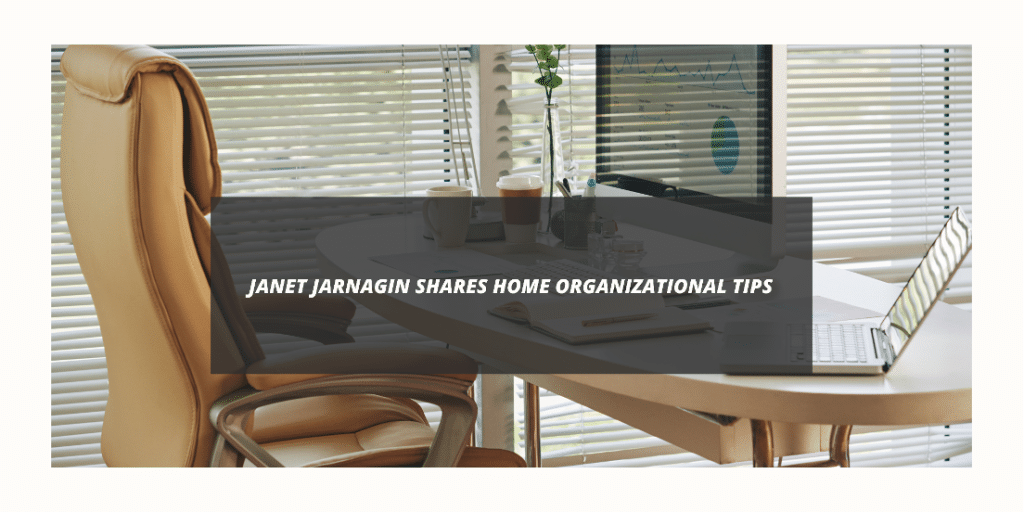Many people continue to work from home, even as they lead and manage large companies. Making the decision to work from home can easily allow personal life to mix with work life, creating not only complexities for time management but also allowing work to infiltrate the home space. With careful planning and a few home organization tips, it may be possible to keep the two components of life separate while ensuring the benefits of working from home are maintained.
Consider these strategies utilized by Janet Jarnagin, an executive leader at her company, in how to successfully manage the process.
#1: Create a Single Space Dedicated to Work
The first step is to have a single dedicated space for managing work tasks. This often means an office space, when that’s possible. Otherwise, dedicate a corner of the living room or basement solely for work tasks. Keeping this space separate from the rest of the home is best because it enables the organization of tasks. Work-related and personal tasks are no longer handled in shared spaces, minimizing conflict and improving focus.
#2: Declutter the Workspace by Creating a Home for Everything
Decluttering the dedicated workspace is a critical first move. Remove anything from this space that is not work-related. Then, create a “home” for each item or a place where the item will remain stored on an ongoing basis when not in use. Make this a professional setting, eliminating anything that is related to personal tasks.
#3: Eat in a Different Area
Non-work tasks, including enjoying lunch and holding personal meetings, should be done separately from the work environment. Creating this type of separation helps maintain home organization. Lunch dishes do not need to be on the desk. Keep the work laptop in the office while taking a break or eating lunch as well.
#4: Keep Necessary Resources at the Desk
Avoid taking the laptop out to the couch for a break. Keep everything work-related in one space in the home. When there is a meeting, all of the work-related materials necessary are in one location. There is no concern about finding files in another location or trying to locate missing materials. More so, it aids in mental health organization as well. That separation of workspaces and personal spaces is critical to ensuring the most effective mental health break possible.
Janet Jarnagin recommends spending some time setting up a specific office space in the home. This could mean investing in a dedicated office, but it also may mean purchasing necessary storage systems, cabinetry, and professional resources to keep the space organized properly.
#5: Maintain Cleanliness in the Home
Working from home often enables a person to put off chores once reserved for days off. For example, some people may find it easy enough to push off dusting or vacuuming the home, going through the pile of mail, or managing bathroom cleanliness because they are home all of the time. Prior to being at home, these tasks may have been handled Saturday mornings when they did not have to work.
Set up a specific time of the week for handling such tasks. Do so not during work hours. By keeping this as an appointment or habit, the tasks get done routinely, and clutter does not build up too quickly.
#5: Set a Schedule
Create a schedule for home organization. There should be time for cleaning, but there is also the need to purge items not used and to manage day-to-day tasks related to work management, such as going through messages and attending meetings.
Use a digital tool to help, like Google Calendar. This tool is helpful because it allows for the layering of personal and business tasks, when needed, enabling a person to have better insight into managing their day-to-day activities. Janet Jarnagin recommends a schedule that includes tasks for home organization.
#6: The Right Equipment
The ideal home office must also have the right equipment to facilitate success. That should include a larger monitor to improve visuals, a wireless keyboard and mouse (those wires just add to the clutter), and a stand for your mobile phone. Choose one that charges so it can do double duty while you are working. It’s also important to have a desk mat to help alleviate fatigue and create a surface that’s easy to move on.
To elevate your experience, more, she also recommends the use of Rocketbook, it’s a reusable notepad that’s super simple and highly efficient.
Finding the Right Organization Method Matters
For most people, like Janet Jarnagin, it is critical to have a well-thought-out plan that enables not just home organization for the kid’s belongings and home items but also incorporates more management of home organization as it applies to work from home life.
Spend some time focused on home organization, recommends Janet Jarnagin. Doing so will help to improve focus and minimize stress while also helping to ensure that working from home remains an efficient and beneficial process for years to come. Finding that balance is nearly always critical.

